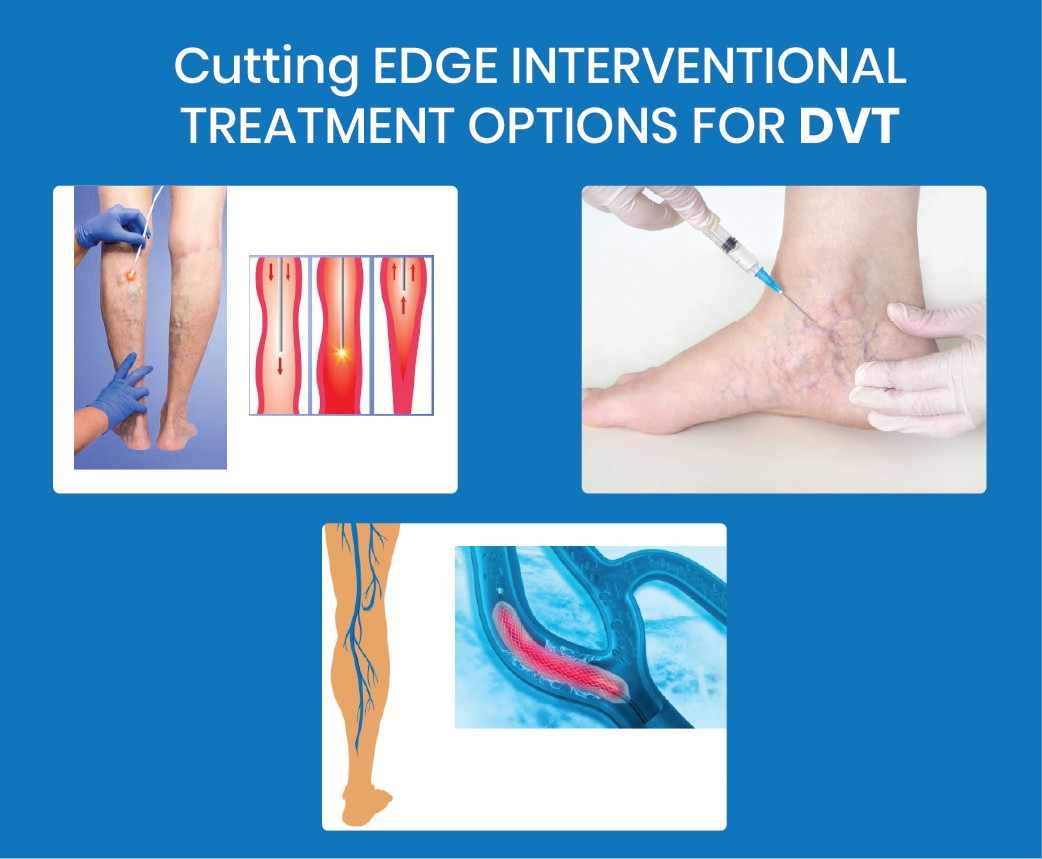Deep vein thrombosis (DVT) is a serious medical condition where a blood clot forms in a deep vein, commonly in the legs. If left untreated, DVT can lead to severe complications, including pulmonary embolism, which is potentially fatal. Immediate treatment is crucial to prevent these outcomes. This blog will delve into the causes of DVT, the urgency of treatment, and how interventional treatment options can help.
Causes of DVT
DVT occurs due to a combination of factors that make up Virchow’s triad: hypercoagulability, stasis, and endothelial injury. Hypercoagulability refers to an increased tendency for blood to clot, which can be due to genetic factors like Factor V Leiden mutation, or acquired conditions such as cancer or pregnancy. Stasis, or slowed blood flow, often happens during prolonged immobility, like long flights or bed rest. Endothelial injury, the third factor, can result from trauma or surgery, particularly orthopedic surgeries involving the lower limbs.
Why Immediate Treatment is Necessary
The primary danger of DVT is that a portion of the clot can break off and travel through the bloodstream to the lungs, causing a pulmonary embolism (PE). PE can block blood flow to the lungs, leading to severe complications, including death. Additionally, DVT can cause long-term issues like post-thrombotic syndrome (PTS), which results in chronic pain, swelling, and skin changes in the affected limb. Immediate treatment reduces these risks, mitigates symptoms, and prevents clot propagation.
Interventional Treatment Options
While anticoagulants are the cornerstone of DVT treatment, interventional therapies are crucial for patients who cannot take these medications or those with extensive clot burden. Here are some key interventional treatments
Endovenous Laser Therapy (EVLT):
EVLT is a minimally invasive procedure used to treat varicose veins, which can contribute to venous stasis and DVT. It involves using laser energy to seal off the affected vein, diverting blood flow to healthier veins. EVLT is effective in reducing symptoms and preventing the recurrence of DVT by improving overall venous circulation.
Sclerotherapy:
Sclerotherapy is another treatment option for varicose veins associated with DVT. It involves injecting a sclerosant solution directly into the vein, causing it to collapse and be reabsorbed by the body. This procedure helps reduce venous stasis and the risk of clot formation, thereby managing and preventing DVT.
Balloon Angioplasty and Stenting:
In cases where DVT causes significant narrowing of the veins, balloon angioplasty and stenting can help. This procedure involves inflating a small balloon within the vein to open it up and placing a stent to keep it open. This treatment restores proper blood flow and reduces the risk of recurrent DVT.
Interventional treatments for DVT are vital for managing patients with severe or complicated cases. These procedures offer rapid symptom relief, prevent serious complications, and improve long-term outcomes. Prompt recognition and treatment of DVT are essential to avoid potentially life-threatening consequences. If you suspect you have DVT or are at high risk, consult our expert interventional radiologists at Avis vascular center and know your treatment options.


